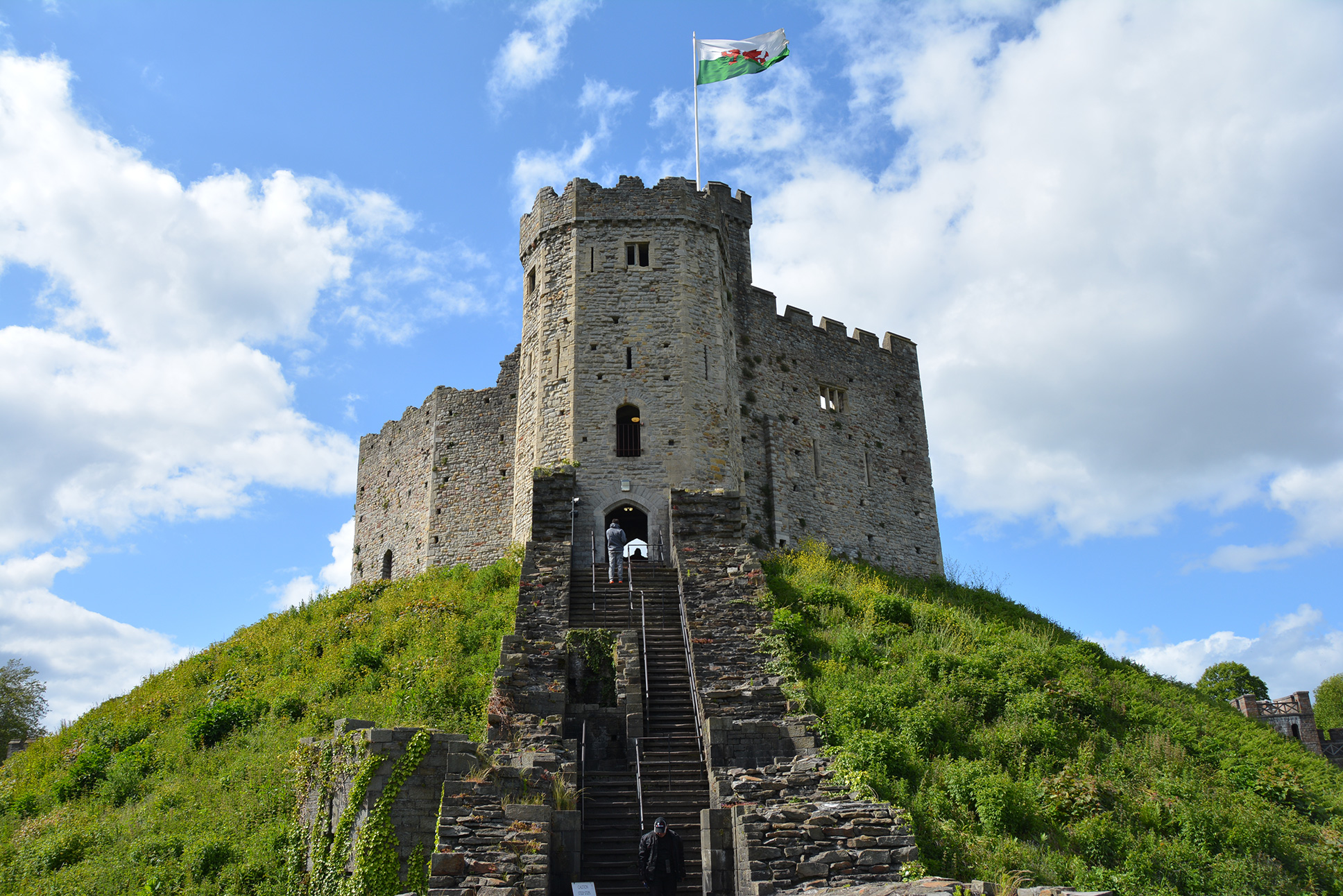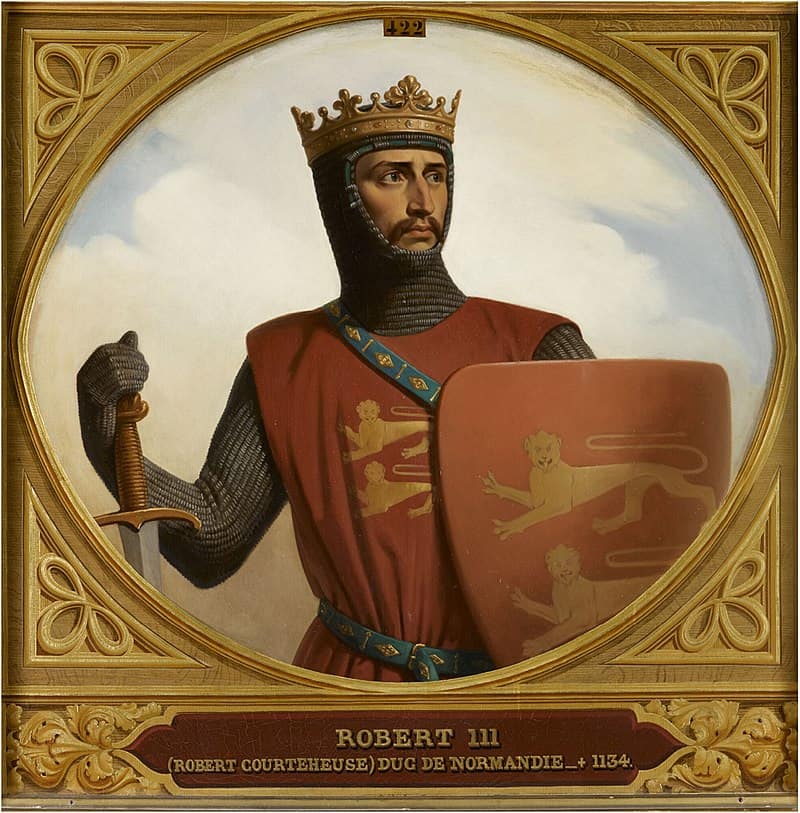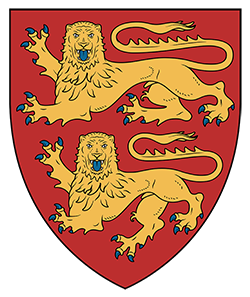Robert Curthose - Duke of Normandy
Woe to him that is not old enough to die.
Robert Curthose was the son of William the Conqueror and succeeded his father as Robert II, Duke of Normandy, from 1087 to 1106. He was known for his turbulent relationship with his family and imprisonment by his younger brother, King Henry I of England.

Robert was born around 1051 in Normandy, France, and was the eldest son of William the Conqueror, the Duke of Normandy and the first Norman King of England, and Matilda of Flanders. His nickname "Curthose" derives from the Norman French "Courtheuse", which means "short stockings", given to him due to his stocky stature and short legs.
As a child, Robert was betrothed to Margaret, the heiress of Maine, but she died before they could be wed. He was skilled in military exercises but was also prone to laziness and weakness of character, which discontented nobles and the King of France used to stir discord with his father and brothers.
In 1077, his younger brothers, William Rufus and Henry, played a prank on Robert and dumped a full chamber pot on his head. Robert started a brawl with his brothers, which was stopped by their father, King William I. Robert felt his dignity was wounded and felt further angered when the King did not punish his brothers. The next day, Robert and some of his followers attempted to lay siege to the castle of Rouen. The siege failed, and the King ordered their arrest, but Robert and his followers took refuge with Hugh of Chateauneuf-en-Thymerais.
Robert then fled to Flanders to the court of Robert I, Count of Flanders, who was his uncle. He then plundered the county of Vexin and caused such mayhem that King William sided with the King of France, Philip I, to stop his rebellious son. It got worse when William discovered that his wife, Matilda, was secretly sending money to Robert.
In January of 1079, it is said that Robert unhorsed King William in combat and wounded him, only stopping his attack when he recognized his voice. Humiliated, the King cursed his son, then raised the siege and returned to Rouen.
In 1080, King William and Robert reached a truce, thanks to the efforts of Queen Matilda, which lasted until she died in 1083. After that, Robert traveled through France, Flanders, and Germany for several years. During this time, Robert fathered several illegitimate children, including a son, Richard, who spent most of his life at the court of Robert's brother, William Rufus. Richard was killed in a hunting accident in the New Forest in 1100. Ironically, William Rufus suffered the same fate the same year, also in the New Forest.

In 1087, King William was mortally wounded during a riding accident at the Siege of Mantes. Before dying, William granted the Duchy of Normandy to his eldest son, Robert Curthose, but also granted the Kingdom of England to another son, William Rufus. The youngest son, Henry, was given money to buy land. Robert and William Rufus agreed to be each other's heirs, but this agreement was short-lived after barons in England joined Robert when he tried to displace William Rufus as King of England in the Rebellion of 1088. The rebellion failed after Robert Curthose failed to join the English rebels in battle. Two years later, William Rufus tried to capture Rouen, which Robert prevented with the help of his younger brother Henry.
In 1096, Robert joined the First Crusade by mortgaging the Duchy of Normandy to William Rufus for 10,000 marks to finance his campaign. He was a key leader during the crusade, taking part in battles including the Siege of Antioch and the capture of Jerusalem in 1099. On his return from crusade, he married Sybilla of Conversano, which gained him a large dowry that he used to buy back the Duchy of Normandy. Robert and Sybilla had one son, William Clito.
While Robert was on crusade, his brother William Rufus, King William II, died on August 2nd, 1100. Since Robert was absent, His brother Henry seized the crown of England for himself, becoming King Henry I.
In July of 1101, Robert Curthose led an invasion against his brother, King Henry I. He landed near Portsmouth. Still, he lacked the support of critical English barons and the Archbishop of Canterbury. The Charter of Liberties issued by Henry I at his coronation was also popular with the English. Robert was forced to sign the Treaty of Alton, renouncing his claim to the English crown.
Robert continued to stir discord with Henry, and in 1105, Henry invaded Normandy to confront Robert. In 1106, Henry defeated Robert and his army at the Battle of Tinchebray and claimed Normandy as a possession of the English crown. Robert was captured during the battle and taken to Devizes Castle in Wiltshire as a prisoner, where he was held for twenty years before being moved to Cardiff Castle in Wales, in 1126. He wrote one poem in Welsh while being held at Cardiff Castle, which contained the line "Woe to him that is not old enough to die.”

On February 3rd, 1134, Robert Curthose died at Cardiff Castle. He was buried at Gloucester Cathedral, where a grand effigy of him is still present.
